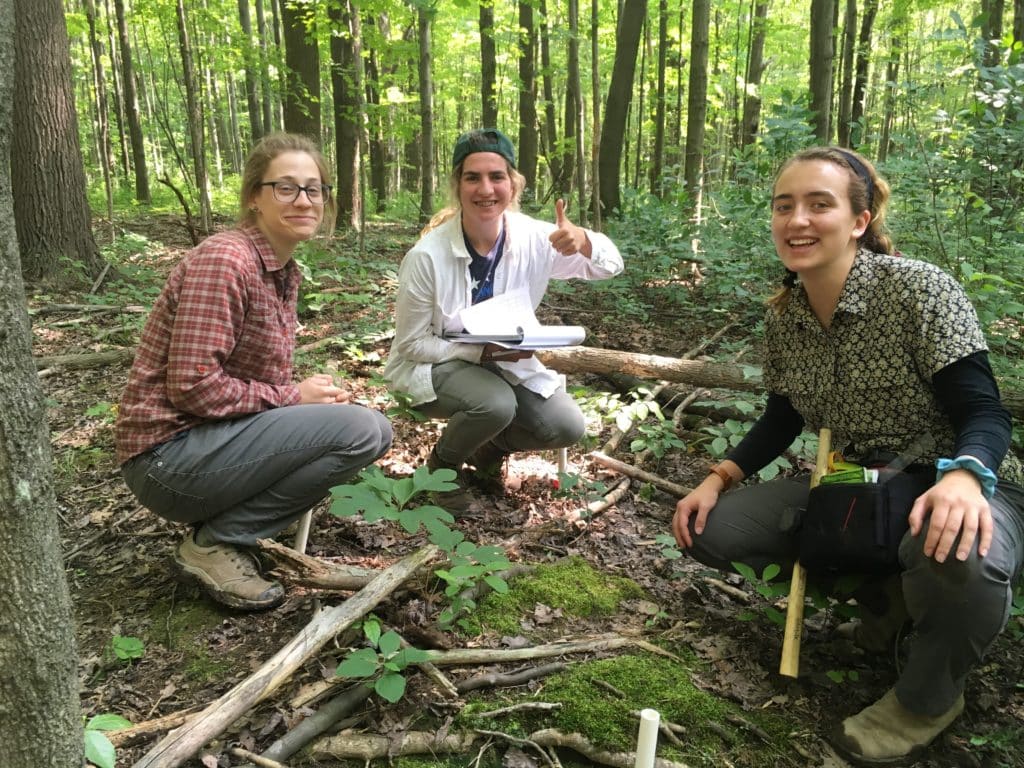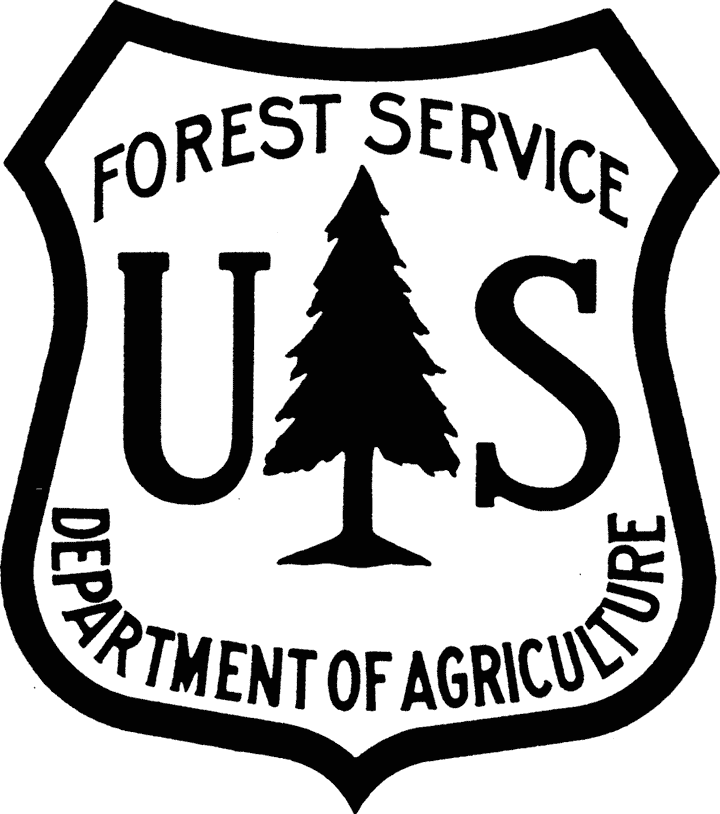Research
Projects

Soil and Microbial Ecology
Acidic precipitation and forest health
Holden scientists received a grant from the National Science Foundation to look at how forests and soils respond to changes in acidity and soil phosphorus availability. They are manipulating soil pH and fertility in a long-term study of Ohio forests using crushed limestone (lime) and phosphorus fert
Read more
Soil and Microbial Ecology
Soil ecology of urban environments
Urbanization has a substantial impact on natural ecosystems where only certain plant or animal species can thrive in areas that have high amounts of development and chemical pollution from human activities. Whether urbanization has this same effect on organisms belowground is currently unknown. But belowground organisms, such as mycorrhizal fungi that form beneficial relationships with plants and assist plants in acquiring nutrients, are necessary for proper plant growth and survival.
Read more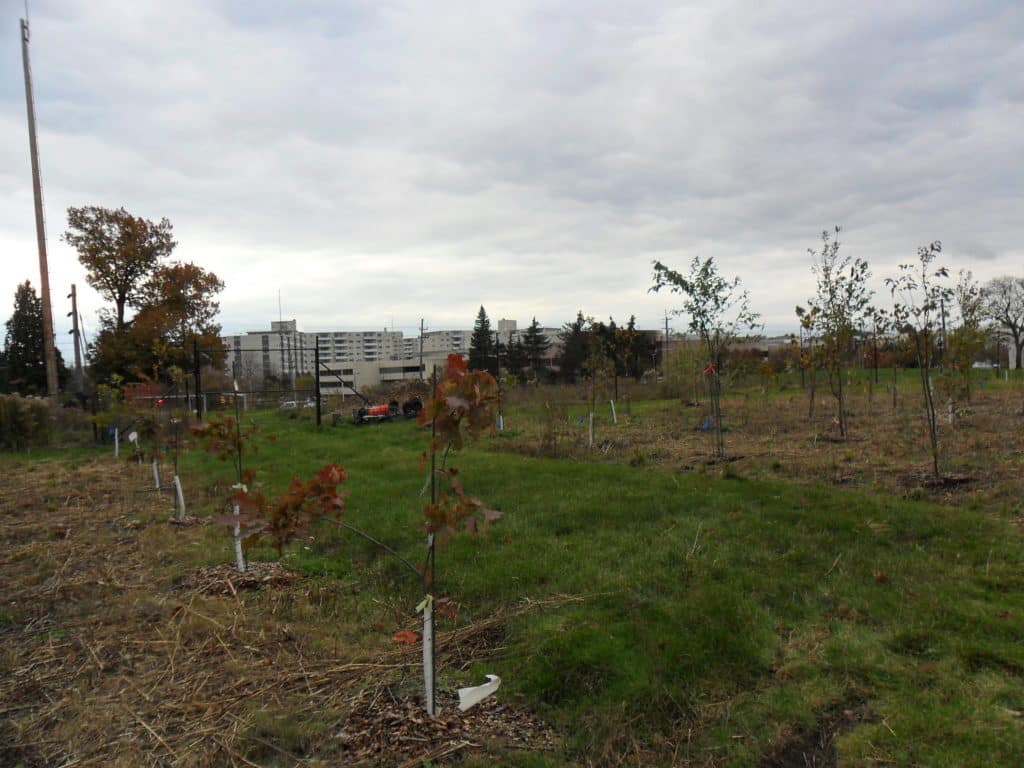
Plant Physiological Ecology
Leaf and flower heat tolerance of cold hardy Rhododendron species
While Rhododendron are well-adapted to cold climates, owing to changes in climate, heat stress is becoming a major factor limiting Rhododendron production. The way plants allocate resources, i.e. the economics of carbon and water use, determines their ability to survive stressful events like frost or heatwaves, as well as the timing, quality, and longevity of growth and reproduction. We will determine species leaf and floral resource allocation, their temperature tolerance, as well as the timing of leaf and flower growth and how this relates to seed production.
Read more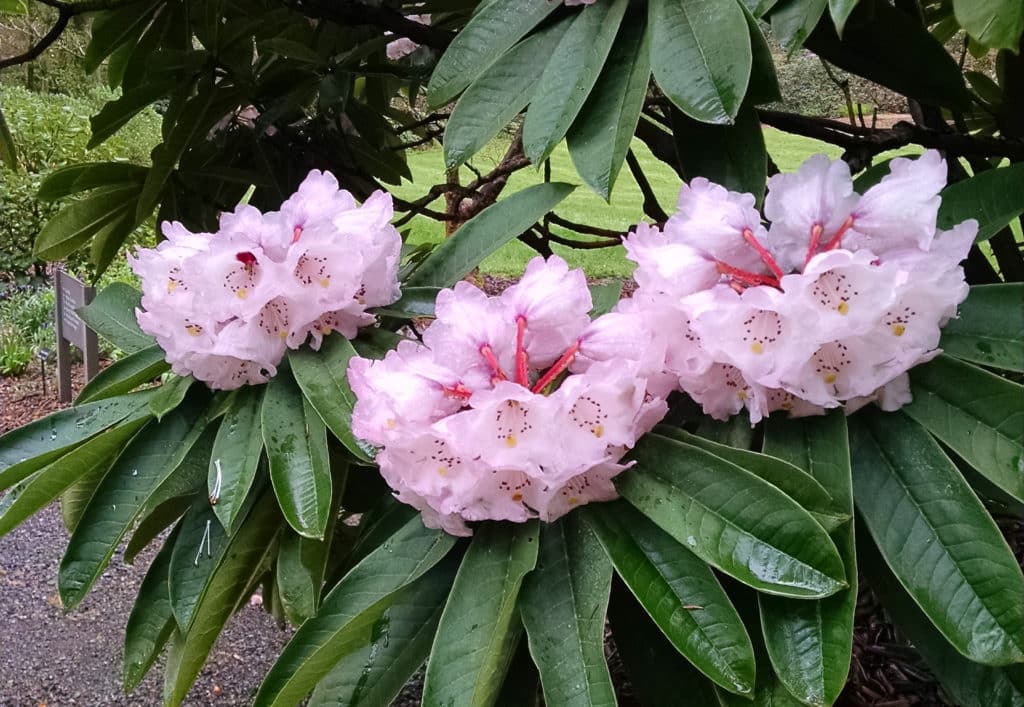
Community Ecology
Forest management and restoration
We are exploring best practices in forest management in northeast Ohio, and beyond. Since 2018, scientists and conservation staff at the Holden Arboretum have partnered with area scientists and land management professionals to develop the Working Woods, a 67-acre forest management demonstration.
Read moreSoil and Microbial Ecology
Forest pathogens and tree health
When given the proper environmental conditions and susceptible hosts, pathogens can do significant damage to forests. Forest pathogens are usually microscopic and include fungi, bacteria, viruses, and invertebrates. Because they are typically microscope, pathogens associate not just with the host organism such as the tree or plant species they affect, but with other microscopic organisms that live on plant surfaces. These microorganisms that live on leaves, roots or in soil make up the forest microbiome, and can include bacteria, fungi, and other microorganisms that associate with these habita
Read more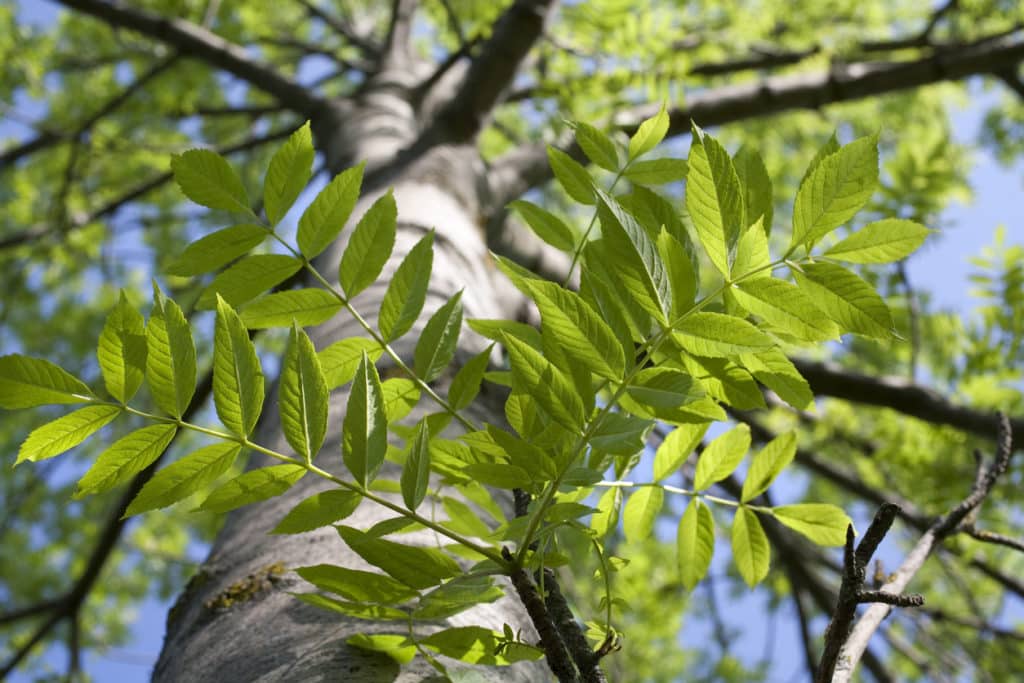
Community Ecology
Global warming shifts plant phenology
We are exploring how spring phenologies are shifting with the changing climate in the Holden Arboretum’s Bole Woods. In this citizen science project, volunteers have been monitoring spring leaf out in the forest canopy in relation to the emergence and flowering of spring ephemeral wildflowers in the forest understory since 2018. We use these data to understand how the shifting climate is driving changes in the timing of these events, and how mismatched shifts between the canopy and understory may change the forest wildflower community.
Read morePlant Physiological Ecology
Local adaptation to climate in Rhododendron minus
Plant species are distinct types which we recognize by their unique leaf and flower traits, but how do different species evolve? One way this can occur is when populations of a widespread species become adapted to the local climate where they are growing, thus preventing seedlings from establishing outside of their home climate and isolating populations from each other.
Read more
Rhododendron Conservation and Collections
Rhododendron collection curation
Rhododendrons have a storied history, both locally and across the world, and they have thrilled gardeners for centuries. The genus contains roughly one thousand wild-occurring species, and man-made selections number in the tens of thousands. How do we decide which rhododendrons to include in our plant collection?
Read moreRhododendron Conservation and Collections
Landscape plant breeding
Whether in an old growth forest or an urban street, plants benefit our physical and mental well-beings and provide countless ecosystem services. Unfortunately, not all plants are well-adapted to human spaces, or they become less-adapted as our environment changes. Our group seeks to develop new plants for the spaces in which we interact with them most: our homes and our communities.
Read moreSoil and Microbial Ecology
Diversity of soil fungi and microbes
Holden is conducting research into the effects of soil physical and chemical properties on the diversity and function of soil microbes in these forests.
Read more
Community Ecology, Soil and Microbial Ecology
Ecological integrity of forests
Global change phenomena are imminent and substantial threats to biodiversity. Such threats include invasive species, global warming, land use history, and predator decline and are often induced or exacerbated by humans. To date, most studies on how these phenomena influence ecosystems have focused on aboveground communities. We know far less about how global change phenomena influence belowground organisms. To investigate this question, scientists at HF&G have studied how agricultural land use history, invasive species, and deer herbivory have altered soil fungi and bacteria. Current research
Read more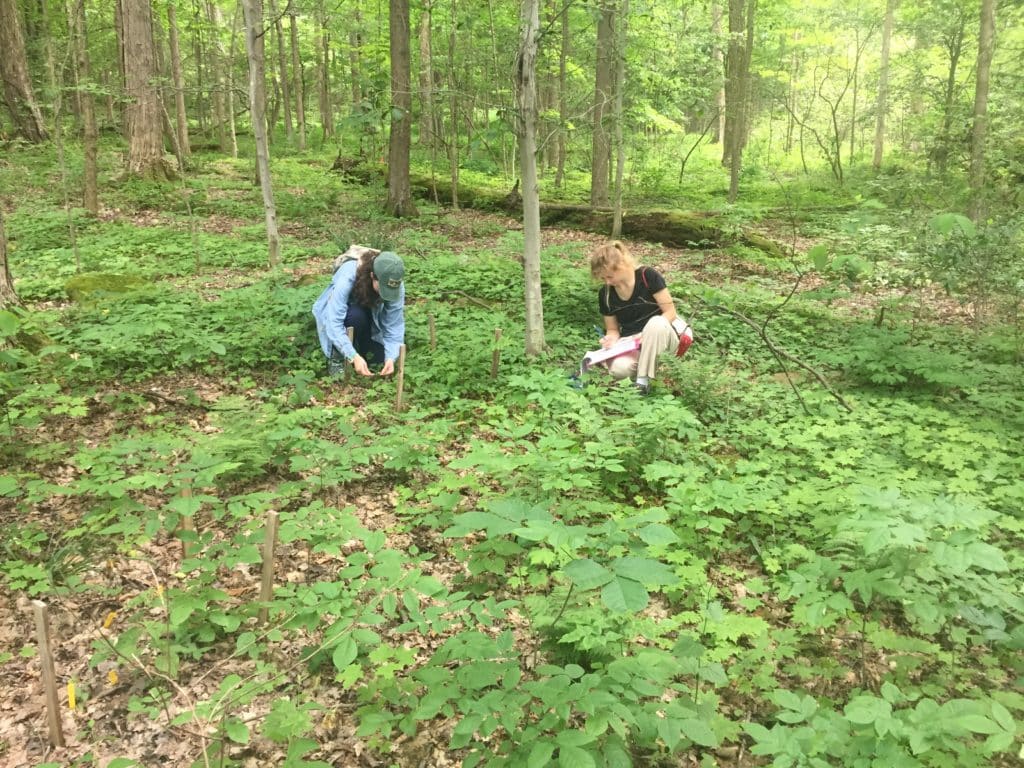
Plant Physiological Ecology
Physiology of urban and rural trees in NE Ohio
As urban areas expand, native forest fragments are becoming surrounded by pavement and cement, exposing them to higher temperatures, elevated CO2, higher light availability and pollution. We rely on urban forests to provide carbon storage, recreation, and pollution mitigation, but urban forests are often overlooked as an important ecological system.
Read moreCommunity Ecology
Community assembly in a warmer world
When a plant community develops anew (community assembly) the order in which species arrive can shape what that community will ultimately look like. In general, arriving early can be beneficial, but who arrives first and how helpful that is can be driven by both the climate, and the origin of the species (whether it is native or not). My lab is currently working to understand how nonnative species and warming temperatures interact to shape community assembly dynamics in our natural areas.
Read morePlant Physiological Ecology
Invasive plant species
Eastern Red Cedar (Juniperus virginiana) is a conifer species native to the Eastern United States, where this attractive tree has long-been a popular choice for landscaping. But out West in the Great Plains, Red Cedar is known as the “Green Glacier”, because this slow-growing species is invading once-productive grasslands. Ranchers face substantial economic costs in removing Eastern Red Cedar from grazing lands, and it reduces grassland biodiversity through competition with native grassland species. But how do you stop a “Green Glacier”?
Read more